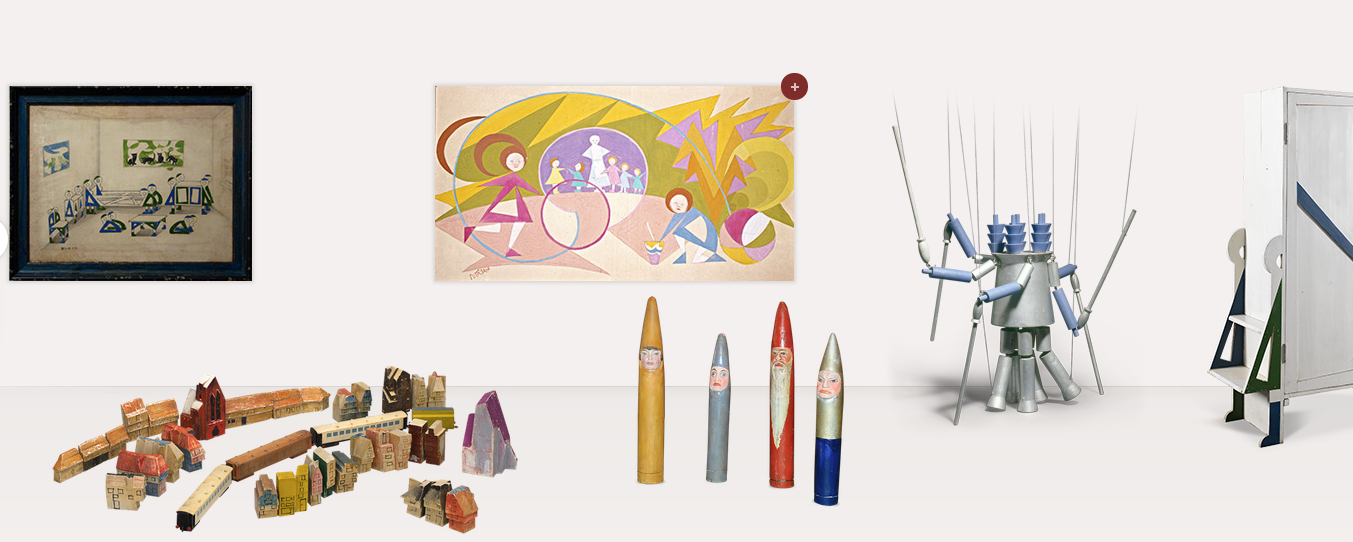
MCG Visits MoMA’s Century of the Child Exhibit
This exhibit has a wonderful website: http://www.moma.org/interactives/exhibitions/2012/centuryofthechild
The Museum of Modern Art here in New York is currently presenting an exhibition of The Century of the Child: Growing by Design, 1900-2000. The exhibition runs through November 5, 2012. The entire MCG Team recently went for a visit and here is an overview of what we experienced.
One of the characteristics of Western industrialized societies is their interest in the child as a separate entity from the adult. Since the Victorian period (1890s), children have often been the focus of social criticism and innovation. While this exhibit focuses on “the material world of the modern child” in Europe and the U.S., it doesn’t neglect the social and intellectual aspects of this new concept of childhood.
At the beginning of the 20thcentury, both the Arts & Crafts and Art Nouveau movements focused on the unity of all the arts, attempting to reunite the fine arts with the craft occupations and techniques. Both movements also used organic forms and colors to shape their art. The “New Art” movement incorporated both Arts & Crafts and Art Nouveau, and this approach was used to “shape the material world of the modern child”(Retrieved fromhttp://www.moma.org/interactives/exhibitions/2012/centuryofthechild/#/timeline/new-century on 8/17/12).
The new focus on children as individuals who are different from adults, and who have different needs, coincided with an explosion of innovation and an artistic focus on children. Avant-Garde artists looked for ways to release the childlike creativity within them. They also created new forms of furniture, toys, books, and interiors that would allow children to “release their youthful energy and imagination” (retrieved fromhttp://www.moma.org/interactives/exhibitions/2012/centuryofthechild/#/timeline/avant-garde-playtime on 8/17/12).
The interwar period (1920-30) was a time of idealism and concern with nurturing children and providing healthy and uplifting environments for them. The design of school buildings with access to light and air, toys like the Skippy Racer (an early scooter), and comfortable, durable clothing, embodied these goals. Many aspects of these designs are still with us today.
During World War II, another side of this intense focus on children surfaced. Art and design were used in posters, children’s games, children’s clothing and books, to teach children their place in society and to encourage hatred of the enemies of their societies. During World War II, toy companies on both sides produced games that depicted the enemies of the Axis and the Allies as silly, stupid, and evil. Organizations like the Girl and Boy Scouts in the U.S., the Hitler Youth in Germany, and the Pioneers in the Soviet Union, involved their young members in wartime activities.
In the postwar period, the children of many of the industrialized countries became the harbingers of a new, expansive, and utopian society. They also became consumers, as billion-dollar industries arose to meet the new demand for children’s books, toys, clothing, media, foods and a host of other products. This trend has continued, in spite of considerate opposition to the targeting of children by advertisers.
The brave, new digital world that children are growing up into now offers both the promise of more freedom for children, in the ways that they play, learn, and communicate, and the dangers of more freedom in that they can be exposed to information and people that can be dangerous to them. Children can also harm others in a virtual world where their behavior may not be monitored in the same ways it is in the physical world.
The digitalization of both children’s games and educational materials is leading to the development of new skills and new ways of learning older skills. Our job as educational researchers is to support the development of new products by discovering what characteristics of these products are effective in conveying new ideas and teaching new skills. For us, looking backward at the inspiring designs and concepts of the last century, was fascinating, as was looking forward to the educational and recreational environments that allow children the freedom they need to become the inventors of the 21stcentury.





 Your message was successfully sent. Thank You!
Your message was successfully sent. Thank You!